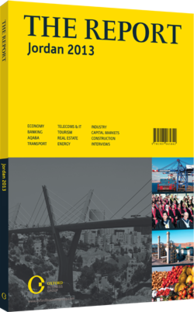OBG talks to Søren Hansen, CEO, Aqaba Container Terminal

Interview: Søren Hansen
How do you see Aqaba’s status as a regional cen-tre for logistics and transport, and what implica-tions will it have on Jordan’s overall growth?
SOREN HANSEN: In light of the current geopolitical arena, it is now a major trade gateway not only for Jordan, but for surrounding countries as well – this is leading to an increase in trade and transportation. This increase in trade and transportation benefits not only the ports of Aqaba, but also the entire national economy. Trans-portation and handling of cargo is still a labour-inten-sive industry, and with the growth in volume we are cre-ating more jobs for the Jordanian people.
Billions of dollars have already been invested through-out Aqaba since 2001, when the Special Economic Zone was established. This includes significant upgrades to the port facilities, which have facilitated growth. With the favourable fiscal conditions in the Aqaba Spe-cial Economic Zone and the solidification of Aqaba as a logistics hub for the Red Sea, more investors are bound to consider Aqaba as a place to invest and to establish logistics centres and industrial zones. This continued growth will further benefit the overall expan-sion of the Jordanian economy.
What distinct cost-advantages can Aqaba leverage as a cargo destination during this time of prolonged regional conflict?
HANSEN: In the international transportation industry, economies of scale and cost efficiencies determine the winners of the game. With the considerable invest-ments in the supply chain in Aqaba during the past decade, we have made vast improvements to the over-all supply chain, and hence improved our overall com-petitiveness as a gateway. To this effect, Aqaba Con-tainer Terminal has gone to great lengths to improve our facility to make it more attractive to the interna-tional shipping lines.
Since 2006, more than $240m has been invested in the facility. Recently, we announced the successful completion of the first phase of our berth expansion project. This phase has delivered 200 metres of expand-ed quay length and a larger inventory, including the arrival of two major quay cranes and four yard cranes.
The new cranes enable us to serve even bigger ships, which again will help make Aqaba a more cost-effec-tive gateway for international transport. By the end of 2013, the terminal’s capacity will have doubled.
How can Jordan better streamline Customs proce-dures in order to create a more effective transport network? What more needs to be done?
HANSEN: Major parties such as the Aqaba Special Eco-nomic Zone Authority, Aqaba Development Corpora-tion, the Jordan Customs Department, and other stake-holders regularly discuss means of collaboration with us. We all need to work together to provide effective means of transport and clearance of goods, especial-ly now that the infrastructure for timely and speedy deliv-ery of goods has been put in place. To ensure that Aqa-ba remains an attractive gateway for the long term, it would seem relevant to evaluate and benchmark the clearance procedures and regulation with other coun-tries. Such an initiative will strengthen Aqaba’s position as the preferred regional transport and trade hub.
What are Aquba’s key trade regions as it looks to expand and deepen Jordan’s markets?
HANSEN: Historically, Aqaba has served the wider Lev-ant region, including Jordan and Iraq as well as the northern parts of Saudi Arabia. By continuing imple-ment procedural improvements for regional trade rela-tions, and by leveraging our central location, we believe that Aqaba is poised to continue to expand our cover-age of these main markets.
One of the distinct advantages Jordan offers com-pared to other countries in the region is its political envi-ronment. This is an important consideration for ship-pers and consignees when determining the routing of their goods, and something we believe will further assist us in solidifying our position within the region.
You have reached the limit of premium articles you can view for free.
Choose from the options below to purchase print or digital editions of our Reports. You can also purchase a website subscription giving you unlimited access to all of our Reports online for 12 months.
If you have already purchased this Report or have a website subscription, please login to continue.

